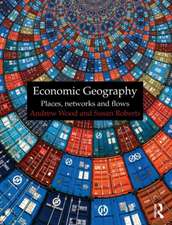Natural Resource Management and Local Development: Topics in Biodiversity and Conservation, cartea 12
Editat de Russel D. Taylor, Emmanuel Torquebiauen Limba Engleză Paperback – 14 oct 2014
| Toate formatele și edițiile | Preț | Express |
|---|---|---|
| Paperback (1) | 942.31 lei 43-57 zile | |
| SPRINGER NETHERLANDS – 14 oct 2014 | 942.31 lei 43-57 zile | |
| Hardback (1) | 948.29 lei 43-57 zile | |
| SPRINGER NETHERLANDS – 14 oct 2010 | 948.29 lei 43-57 zile |
Din seria Topics in Biodiversity and Conservation
- 24%
 Preț: 1605.60 lei
Preț: 1605.60 lei - 18%
 Preț: 1239.49 lei
Preț: 1239.49 lei - 18%
 Preț: 947.50 lei
Preț: 947.50 lei - 18%
 Preț: 1218.21 lei
Preț: 1218.21 lei - 18%
 Preț: 944.51 lei
Preț: 944.51 lei -
 Preț: 435.38 lei
Preț: 435.38 lei - 15%
 Preț: 646.62 lei
Preț: 646.62 lei - 24%
 Preț: 806.73 lei
Preț: 806.73 lei - 18%
 Preț: 1114.65 lei
Preț: 1114.65 lei - 18%
 Preț: 1126.35 lei
Preț: 1126.35 lei - 18%
 Preț: 1834.27 lei
Preț: 1834.27 lei - 18%
 Preț: 1019.49 lei
Preț: 1019.49 lei - 18%
 Preț: 1236.38 lei
Preț: 1236.38 lei - 18%
 Preț: 1231.47 lei
Preț: 1231.47 lei - 18%
 Preț: 1236.38 lei
Preț: 1236.38 lei - 18%
 Preț: 1230.66 lei
Preț: 1230.66 lei - 18%
 Preț: 1232.71 lei
Preț: 1232.71 lei - 18%
 Preț: 1376.53 lei
Preț: 1376.53 lei - 18%
 Preț: 944.51 lei
Preț: 944.51 lei
Preț: 942.31 lei
Preț vechi: 1149.16 lei
-18% Nou
Puncte Express: 1413
Preț estimativ în valută:
180.31€ • 188.76$ • 149.20£
180.31€ • 188.76$ • 149.20£
Carte tipărită la comandă
Livrare economică 07-21 aprilie
Preluare comenzi: 021 569.72.76
Specificații
ISBN-13: 9789400798373
ISBN-10: 9400798377
Pagini: 248
Ilustrații: V, 241 p.
Dimensiuni: 155 x 235 x 13 mm
Greutate: 0.35 kg
Ediția:2011
Editura: SPRINGER NETHERLANDS
Colecția Springer
Seria Topics in Biodiversity and Conservation
Locul publicării:Dordrecht, Netherlands
ISBN-10: 9400798377
Pagini: 248
Ilustrații: V, 241 p.
Dimensiuni: 155 x 235 x 13 mm
Greutate: 0.35 kg
Ediția:2011
Editura: SPRINGER NETHERLANDS
Colecția Springer
Seria Topics in Biodiversity and Conservation
Locul publicării:Dordrecht, Netherlands
Public țintă
Professional/practitionerCuprins
Natural resource management by rural citizens in developing countries: innovation still required; Emmanuel Torquebiau, Russel D. Taylor.- The strategic pillars of communal natural resource management: benefit, empowerment and conservation; Marshall W. Murphree.- Community based natural resource management in Zimbabwe: the experience of CAMPFIRE; Russel D. Taylor.- Mobilizing for nature in southern African community-based conservation policies, or the death of the local; Estienne Rodary.- Parks-people conflicts: the case of Gonarezhou National Park and the Chitsa community in south-east Zimbabwe; Solomon Mombeshora, Sebastien Le Bel.- Cotton expansion and biodiversity loss in African savannahs, opportunities and challenges for conservation agriculture: a review paper based on two case studies; Frédéric Baudron et al.- The challenge of participatory natural resource management with mobile herders at the scale of a Sub-Saharan African protected area; Aurélie Binot et al.- The last African white giraffes live in farmers’ fields; Romain Leroy et al.- Bees, farmers, tourists and hunters: conflict dynamics around Western Tanzania protected areas; Yves Hausser et al.- Community hunting in logging concessions: towards a management model for Cameroon’s dense forests; Cédric Vermeulen et al.- Conservation value for birds of traditionally managed isolated trees in an agricultural landscape of Madagascar; Emily A. Martin et al.- Can engaging local people’s interests reduce forest degradation in Central Vietnam?; M. Boissière et al.- Taking into account local practices and indigenous knowledge in an emergency conservation context in Madagascar; Chloé N. Marie et al.
Textul de pe ultima copertă
Natural resource management by rural citizens in tropical regions is crucial both to the conservation of biodiversity and ecosystem processes, but also to the the well-being and food security of the people that live there. This situation is especially acute in Africa where conflicts between habitat destruction and utilization can arise in areas which are important not only for biodiversity but for the long-term maintenance of ecosystems on which the people ultimately rely. There can also be conflicts between outside specialists and the indigenous knowledge of local communities. A holistic approach involving local peoples in management of their natural resources is therefore essential. A range of approaches to the problem is explored here in relation to natural resource management to local development and livelihoods, and the multi-functional nature of land-use. Major topics debated are the dichotomy between strictly protected areas and ones including human activity, people-centred rather than legally enforced conservation, market forces, and the interrelationships between agriculture and conservation.The book has 12 chapters, prepared by researchers actively involved in community aspects of natural resource management in Africa, and is based on an international workshop held in Niamey, Niger, in 2008. It will be of interest to all involved in the community approach to biodiversity conservation in less developed countries generally and not only in Africa as many of the issues addressed are pertinent globally.Reprinted from Biodiversity and Conservation 18: 10 (2009).
Caracteristici
An overview of community-based approaches to natural resource management and biodiversity conservation Diverse case studies from different African countries Comprises contributions from those actively involved in community-based approaches
















